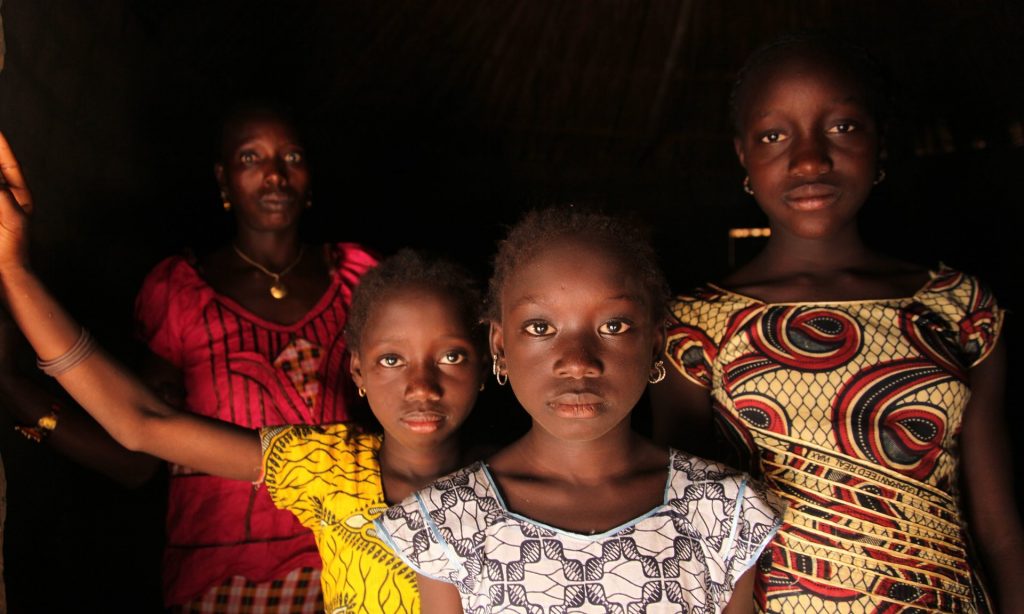Millions of women and girls in the world’s poorest countries are being denied the opportunity to help drive development because of the “countless barriers” they still face in health, education and employment, a report warns.
The study, by the UN population fund, UNFPA, says that while the 48 least developed countries (LDCs) have made considerable progress over the past few decades in reducing infant, child and maternal mortality, and increasing contraceptive use, gender inequality often remains an insurmountable obstacle.
“From adolescence onwards, millions of girls and women are still denied access to schooling or the chance to fulfil their productive potential. They are marrying at ages too young to ensure independent choice, and they are using modern contraceptives at rates far below the global average, with the resulting consequence that reproductive life starts early, is entered into without access to healthcare, and is sustained for many years at high risk to health and life,” it says.
The report adds that the denial of choice and empowerment affects “every aspect of life” for many women in LDCs – and needs to be placed at the centre of the global development agenda.
Although the study recognises that the rates of death among children under five have more than halved in LDCs since 1990, that life expectancy is growing and that the fertility rate is falling – from 6.2 children in 1985-90 to 4.3 in 2010-12 – it says LDCs need to do more to anticipate the approaching phase of accelerated development.
A demographic dividend – which happens when fertility rates fall and the workforce grows at a faster rate than the population dependent on it – would allow many LDCs to make rapid gains in a single generation.
But, says the report: “A demographic dividend is achieved only by ensuring that every adolescent and youth – especially every women and girl – can anticipate excellent health and innovative education, freedom of opportunity and decent employment, and the chance to go through life’s critical transitions – from childhood to family formation and old age – without risk of being derailed by child marriage or unplanned childbearing, maternal morbidity, exposure to violence or displacement, the pain of discrimination, or the risk of early death.”
The scale of the challenges ahead, however, is vast: according to the study, in only five LDCs – Bangladesh, Madagascar, Cambodia, Kiribati and Vanuatu – do the average years of schooling reach or exceed the expected duration of primary school. As of 2010, more than half of the women in LDCs aged 20-24 were married before they were 18; in some countries, the figure was 70%.
While the prevalence of women using modern contraceptives in LDCs rose from 15% in 1994 to almost 34% in 2015, it lags well behind the global average of 64%. Women in LDCs are also more vulnerable to unemployment than men – 84.1% to 71.4%.
The report coincides with this week’s international meeting to gauge the progress made by LDCs since 2011, when a UN conference in Istanbul agreed a 10-year plan to halve the number of LDCs and bring millions of people out of poverty.
Since the establishment of the LDC category in 1971, only four nations have graduated from the list of countries in which the per capita gross national income is $1,035 (£707) or less: Botswana in 1994; Cape Verde in 2007; the Maldives in 2011 and Samoa in 2014.
Rachel Snow, one of the authors of the report, said that although the gains in maternal and infant health, contraception use and primary education have been “very, very impressive”, huge challenges remain.
As well as the global recession, many LDCs have had to contend with instability, conflict, displacement and migration. And, although the rate of population growth in LDCs is expected to slow, their total population is still projected to double in size over the next 35 years, rising from 954 million people last year to 1.9 billion in 2050.
“That speaks to the need to sustain – if not increase – the types of development revolutions we see in these countries,” said Snow. “As much as I’m enthusiastic about the gains in health and the uptick in the use of contraceptives … there’s still really large numbers of women for whom that technology is not available.”
But if a real difference was to made, she added, there needed to be “above all things, an education revolution – and a revolution that allows women to join the formal workforce”.

